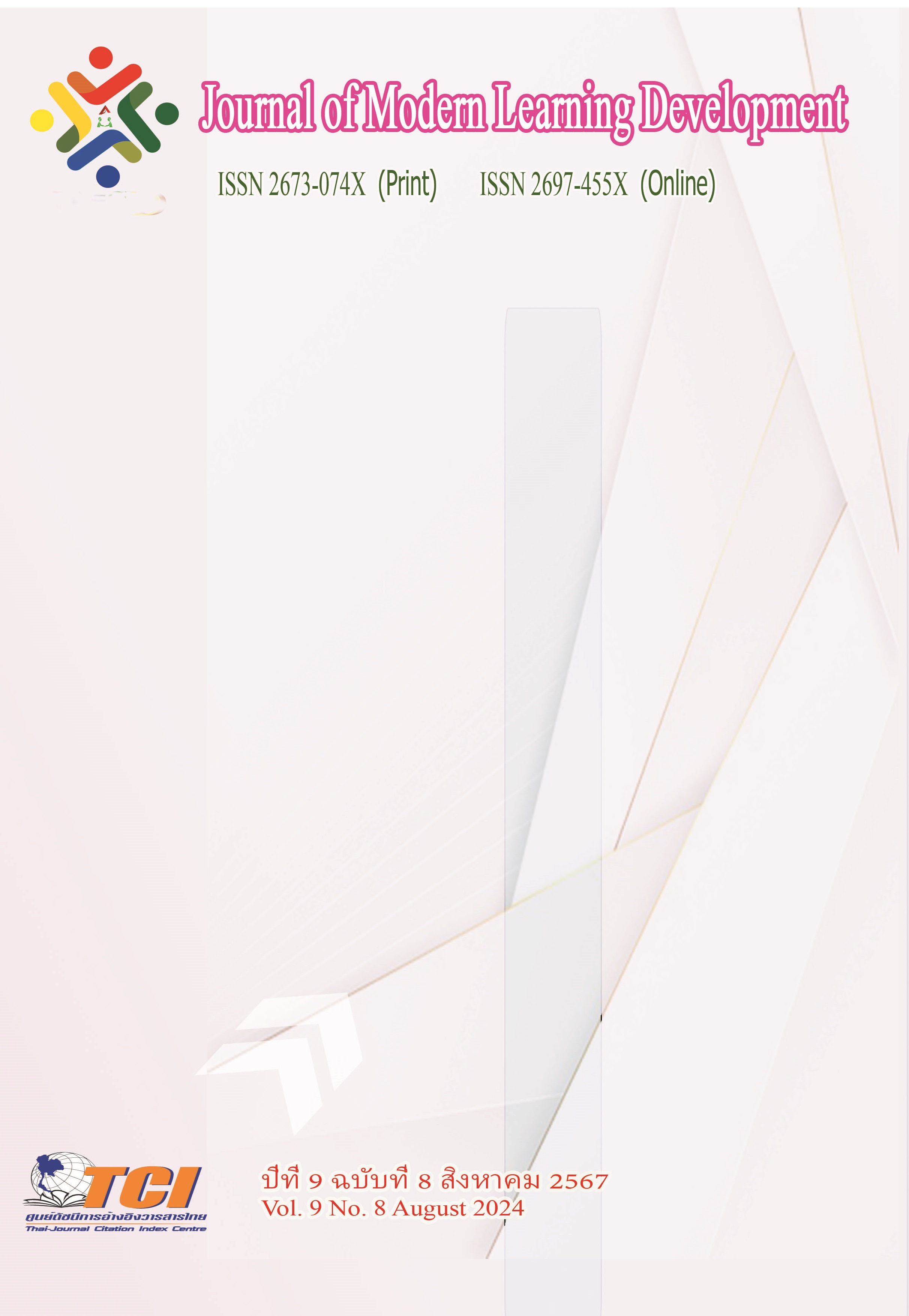Impact of Work-Life Balance on Employees’ Happiness at a Life Insurance Company
Main Article Content
Abstract
This independent study aims were 1) to compare between personal factors and happiness of employees at a life insurance company and 2) to study work-life balance which impact on happiness of employees at a life insurance company. The study sample include 400 employees at a life insurance company and a questionnaire was used as a data collection tool. The statistical methods used incorporate both descriptive statistics, namely, frequency, percentage, mean, and standard deviation; and inferential statistics, namely, independent-sample t-test (T-test), one-way ANOVA (F-test), Least Significant Difference (LSD), and multiple regression analysis.
The results of this study were found that work-life balance of employees at the life insurance company overall were at the high level (mean value of 3.79), as well as happiness (mean value of 4.12). Furthermore, the hypothesis testing 1 was found that different personal factors including of gender, age, marital status, position, and work experience, happiness is not different. It was statistically significant at .05 level. Conversely, different of education and monthly income, happiness is different. It was statistically significant at .05 level. In addition, the hypothesis testing 2 was found that work-life balance including work, family, time, finance, and intelligence impact on level of employees’ happiness at the life insurance company, whereas work being rated as the most influential, followed by intelligence, finance, family, and time, respectively. It was statistically significant at .05 level.
Article Details
References
กนกอร ธรรมแสง, นฤพนธ์ วงศ์จัตุรภัทร, เสกสรรค์ ทองคําบรรจง, และธรรมนันทิกา แจ้งสว่าง. (2565). ความสัมพันธ์ระหว่างสมดุลชีวิตในการทำงานและความสุขในการทำงานของนักกีฬาอาชีพ. วารสารสุขศึกษา พลศึกษา และสันทนาการ. 48 (2), 145-156.
กัลยา วานิชย์บัญชา และฐิตา วานิชย์บัญชา. (2561). สัมประสิทธิ์ Cronbach’s Alpha. กรุงเทพมหานคร: โรงพิมพ์สามลดา.
ณัฐการณ์ พ่อค้า. (2560). ความพึงพอใจในคุณภาพชีวิตการทำงานที่มีความสัมพันธ์ต่อความสมดุลระหว่างชีวิตและการทำงานของพนักงานธุรกิจอุตสาหกรรมปูนซีเมนต์ : กรณีศึกษา บริษัท ทีพีโอ โพลีน จำกัด (มหาชน). การค้นคว้าอิสระปริญญามหาบัณฑิต. บัณฑิตวิทยาลัย: มหาวิทยาลัยเทคโนโลยีราชมงคลธัญบุรี.
เบญจมาศ ดวงเด่น. (2563). ปัจจัยที่ส่งผลต่อความสุขในการทำงานของพนักงานในธุรกิจผู้ให้บริการโทรศัพท์เคลื่อนที่ ในเขตกรุงเทพมหานคร. สารนิพนธ์ปริญญามหาบัณฑิต. บัณฑิตวิทยาลัย: มหาวิทยาลัยมหิดล.
วริษฐา ตระกูลสนทรชัย. (2561). คุณภาพชีวิตในการทำงานที่ส่งผลต่อความสุขในการทำงานของผู้ปฏิบัติงานประจำโรงไฟฟ้าแห่งหนึ่ง. วิทยานิพนธ์ปริญญามหาบัณฑิต. บัณฑิตวิทยาลัย: มหาวิทยาลัย ธรรมศาสตร์.
สหธร เพชรวิโรจน์ชัย. (2564). Workplace Happiness วิธีสร้างความสุขในการทำงานให้ยั่งยืน. ออนไลน์. สืบค้นเมื่อ 5 สิงหาคม 2566. แหล่งที่มา: https://th.hrnote.asia/tips/workplace-happiness-210708/
สุมิตรา ตั้งสมวรพงษ์. (2556). กำหนดเข็มทิศธุรกิจ ด้วยการพัฒนากลยุทธ์. ออนไลน์. สืบค้นเมื่อ 5 สิงหาคม 2566. แหล่งที่มา: https://www.live-platforms.com/th/education/infographic/8589/
อังคณา ธนานุภาพพันธุ์, ดำรงค์ ถาวร, และ ธัญชนก วิจิตร. (2565). ปัจจัยที่ส่งผลต่อความสุขในการทำงานของพนักงานฝ่ายผลิต กรณีศึกษา:บริษัทผลิตภัณฑ์อาหารและเครื่องดื่ม. วารสารศิลปศาสตร์และอุตสาหกรรมบริการ. 5 (1), 1-11.
Thaipublica. (2566). ธุรกิจประกันชีวิตเผยครึ่งแรก ปี 2566 เบี้ยประกันภัยรับรวมโต 3.78%. ออนไลน์. สืบค้นเมื่อ 5 สิงหาคม 2566. แหล่งที่มา: https://thaipublica.org/2023/07/thai-life-insurance-industry-sees-growth-in-1st-half-premium/


